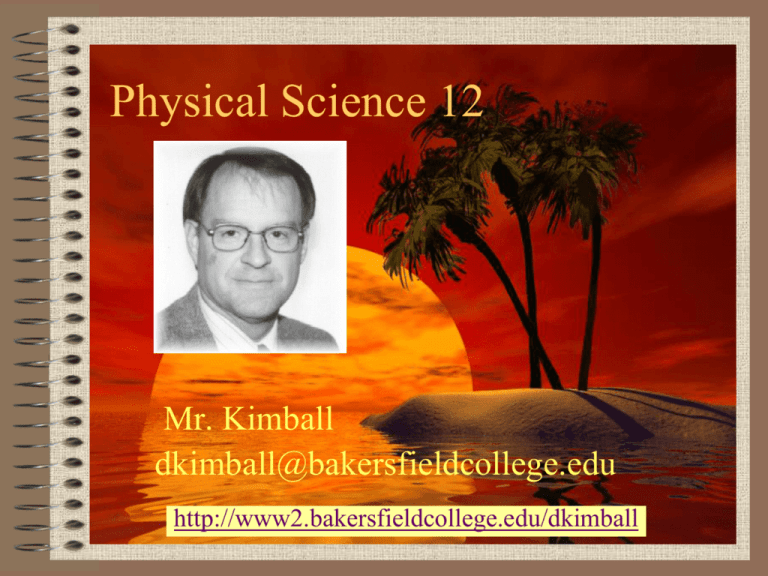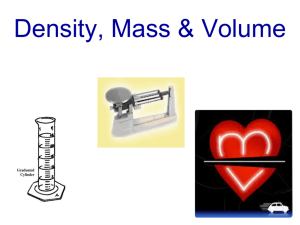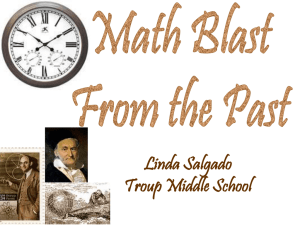Chapter 1 The Scientific Method
advertisement

Physical Science 12 Mr. Kimball dkimball@bakersfieldcollege.edu http://www2.bakersfieldcollege.edu/dkimball Some students prefer to skim through a course. If you really want to succeed you need to go deep! Chapter 1 The Scientific Method Agenda How the Sciences Fit Together College Degrees Course Syllabus Learning Skills Examples of How the Scientific Method has been used and How Science has Developed The Scientific Method Some Useful Definitions What is Gravity? SI System of Measurement Lecture Quiz Physical Science Mathematics Science Anthropology Pscychology Sociology Calculus Trigonometry Inorganic Organic Geometry Algebra Astronomy Geology Meteorology Chemistry Physics How the Sciences Fit Together Physical Analytical College Degrees • • • • • • • • Associates Degree (2 years) Bachelor’s Degree (4 years) Master’s Degree (1 year post graduate) PhD (Doctorate Degree, 4 yr post grad) Post Doctorate Degree Law Degree Medical Doctorate Certified Public Account (CPA) The Class Syllabus http://www2.bakersfieldcollege.edu/dkimball Learning Skills 1. 2. 3. 4. 5. 6. 7. 8. 9. 10. 11. 12. 13. Take responsibility for your education. Have confidence in what you know and can do. Do not procrastinate study. Learn to listen and read precisely. Make and use practice tests to prepare for tests. Persistence. Never give up. Learn to recognize and utilize patterns. Learn to draw pictures and diagrams to aid in communication and understanding. Learn to think sequentially or in steps. Do neat work. Learn to study and work in groups. Try something new. Get help if you need it. Learning Skills Power Point Aristotle Earth Air Fire Water Galileo Galilei Father of the Scientific Method Heavy things fall faster than light things???? Aristotle Archimedes Archimedes lived in Syracuse on the island of Sicily. Archimedes Archimedes used simple machines for catapults and to move water up-hill. Archimedes A comparison of Archimedes’ Pulleys and Study! Big Study! Little Study! The Scientific Method The scientific method consists of four steps: 1. Formulation of a problem 2. Observation and experiment 3. Interpretation 4. Testing the interpretation Hypothesis-an initial scientific interpretation. Law-a relationship or regularity between naturally occurring phenomena. Theory-Explains why a phenomenon or a set of phenomena occurs. Models-to simplify complex situations The Scientific Method The Scientific Method Examples: 1. Pons and Fleishman, Univ. of Utah. 2. Horoscope. 3. Weather. Scientific Method: 1. Formulate a Problem. 2. Observe and collect Data. 3. Interpret Data. 4. Test your Interpretation. 1.8 What Is Gravity? There are four fundamental forces: a. Gravitational b. Electromagnetic c. Weak d. Strong British SI System 1-12. SI System Length Mass Volume Time meter gram Liter second Km-1000m Kg=1000g KL=1000L 1min=60sec 100cm=1m 1000mg=1 g 1000mL=1L 60min=1hr 1000mm=1m http://www.kickstarter.com/projects/52746223/the-state-ofthe-unit-the-kilogram-documentary-fil Foot pound gallon 12in=1ft 16oz=1 lb 4qt=1gal 3ft=1yd 2000 lb=1 ton 2pts=1qt 5280ft=1mile second (same) Table 1.1











